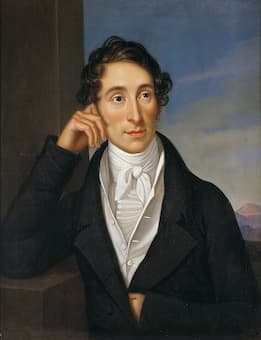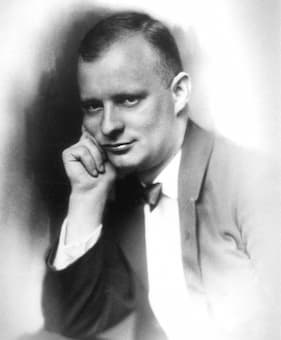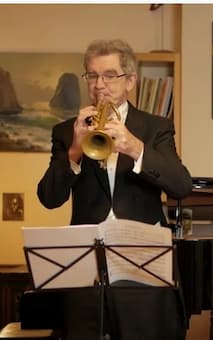
Caroline Bardua: Carl Maria von Weber (1821)
One of the most interesting cross-generational music styles is the theme and variations, particularly when a composer delves into the past to find his inspiration. How a work gets changed and modernized, its style developed, and a new work created is a fascinating process.
We start with incidental music written by Carl Maria von Weber (1786-1826) for a play by Carlo Gozzi, Turandot. In 1809, Weber was asked to write incidental for a production of Turandot, as reworked by the poet Schiller. As with most incidental music, it didn’t live much longer than the production.
Carl Maria von Weber: Turandot, J. 75 – Overtures (Queensland Orchestra; John Georgiadis, cond.)
In 1940, the German composer Paul Hindemith was approached by the Russian choreographer Léonide Massine for some ballet music based on Weber. In his work, Hindemith took the theme from the overture and transformed it, making it, in his words ‘lightly coloured and bit sharper.’

Paul Hindemith (1923)
Massine, upon hearing the piano arrangements of the first and third movement, turned the work down, indicating that he wanted something that was closer to Weber than to Hindemith. Or, the other story is that Hindemith, seeing some of Massine’s choreography, disliked Massine’s work and wrote the Symphonic Metamorphosis of Themes by Carl Maria von Weber instead of what Massine wanted. Another story has it that Hindemith had seen a Massine ballet that had been designed by Salvador Dali, which he hated. When he found out that Dali was supposed to design Massine’s new Weber-inspired ballet, Hindemith withdrew. Whichever way the story went, the symphonic orchestras benefited, and the ballet orchestras lost out.
In addition to the overture from Turandot, Hindemith also used music from other sources, including a Chinese opera theme found in Rousseau’s Dictionary, and from Weber’s piano duets, Opp. 10a/2 and 60/4 and 7.
Carl Maria von Weber: 8 Pieces, Op. 60 – IV. Alla zingara (Duo d’Accord)
Hindemith and his wife were familiar with Weber’s piano duets and played them frequently, including the 4-hand arrangement of the Turandot incidental music. By the 1940s, though, Weber’s music was rarely heard and when Hindemith got his hands on Weber’s music, he brought it to life. His ‘symphonic metamorphosis’ was all encompassing and brought a great man’s music to a new audience.
Paul Hindemith: Symphonic Metamorphosis on Themes of Carl Maria von Weber – I. Allegro (New Zealand Symphony Orchestra; Franz-Paul Decker, cond.)
The second movement takes the theme from the Turandot overture.
Paul Hindemith: Symphonic Metamorphosis on Themes of Carl Maria von Weber – II. Turandot: Scherzo (New Zealand Symphony Orchestra; Franz-Paul Decker, cond.)
The material for the third movement comes from the Opus 10a piano duets, written around 1802-3.
Carl Maria von Weber: 6 Pieces, Op. 10 – II. Andantino con moto (Duo d’Accord)
Paul Hindemith: Symphonic Metamorphosis on Themes of Carl Maria von Weber: III. Andantino (New Zealand Symphony Orchestra; Franz-Paul Decker, cond.)
The final movement comes from Weber’s Opus 60 again.
Carl Maria von Weber: 8 Pieces, Op. 60 – VII. March (Duo d’Accord)
Paul Hindemith: Symphonic Metamorphosis on Themes of Carl Maria von Weber – IV. Marsch (New Zealand Symphony Orchestra; Franz-Paul Decker, cond.)

Peter J. Lawrence
In his setting, Hindemith smooths out Weber’s sometimes stodgy writing and makes it, in its symphonic form, achieve so much of what it promised 140 years earlier.
Hindemith’s work eventually made it to the ballet stage through the choreography of George Balanchine (Metamorphoses) in 1952 and as a ‘neo-Balanchine’ ballet by Jimmy Gamonet De Los Heros (Movilissimanoble) in 1990 and by Minoru Suzuki (Henyo: Unknown Symphony) in 1991, but neither work received outstanding reviews.
Hindemith’s music was taken up by British composer Peter J. Lawrence in his work Further Metamorphoses (based on themes by Carl Maria von Weber), written for 12-part ensemble of brass and 2 harps. If Hindemith brought Weber into the 20th century, Lawrence brings Hindemith to jazz.
Peter J. Lawrence: Weitere Metamorphosen (after C.M. von Weber) – I. Allegro – Kadenze frei im Tempo (Martin Schumann, piano; Christoph Bielefeld, harp; Christine Eberherr, harp; Young German Brass Soloists; Walter Hilgers, cond.)
Peter J. Lawrence: Weitere Metamorphosen (after C.M. von Weber): III. Allegro alla marcia (Martin Schumann, piano; Christoph Bielefeld, harp; Christine Eberherr, harp; Young German Brass Soloists; Walter Hilgers, cond.)
Written for the 40th anniversary of Hindemith’s death in 2003, the work moves us from the early 19th century to the late 20th century to the 21st century and opens the possibilities for yet more inventions on the Weber original.
For more of the best in classical music, sign up to our E-Newsletter

